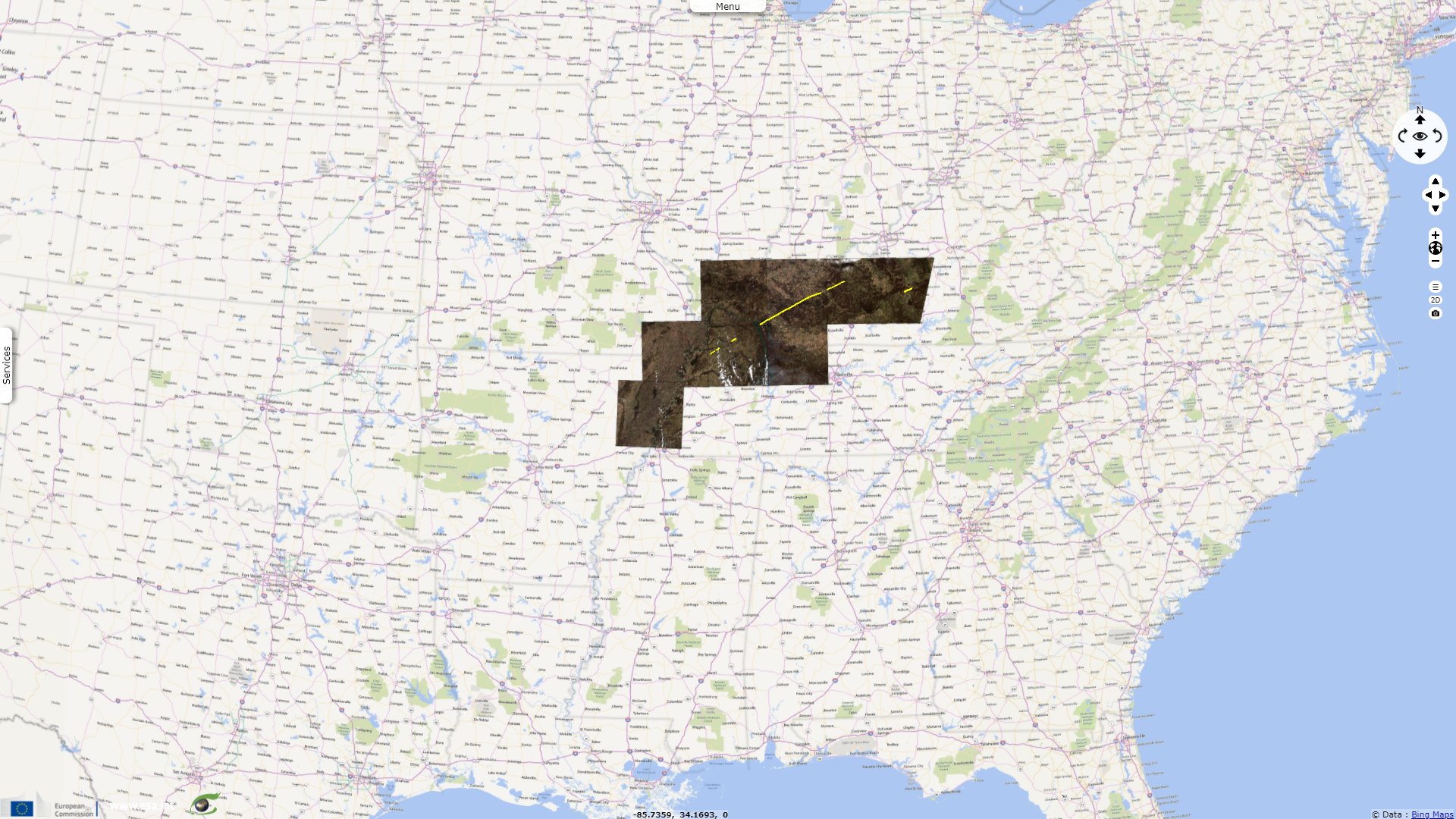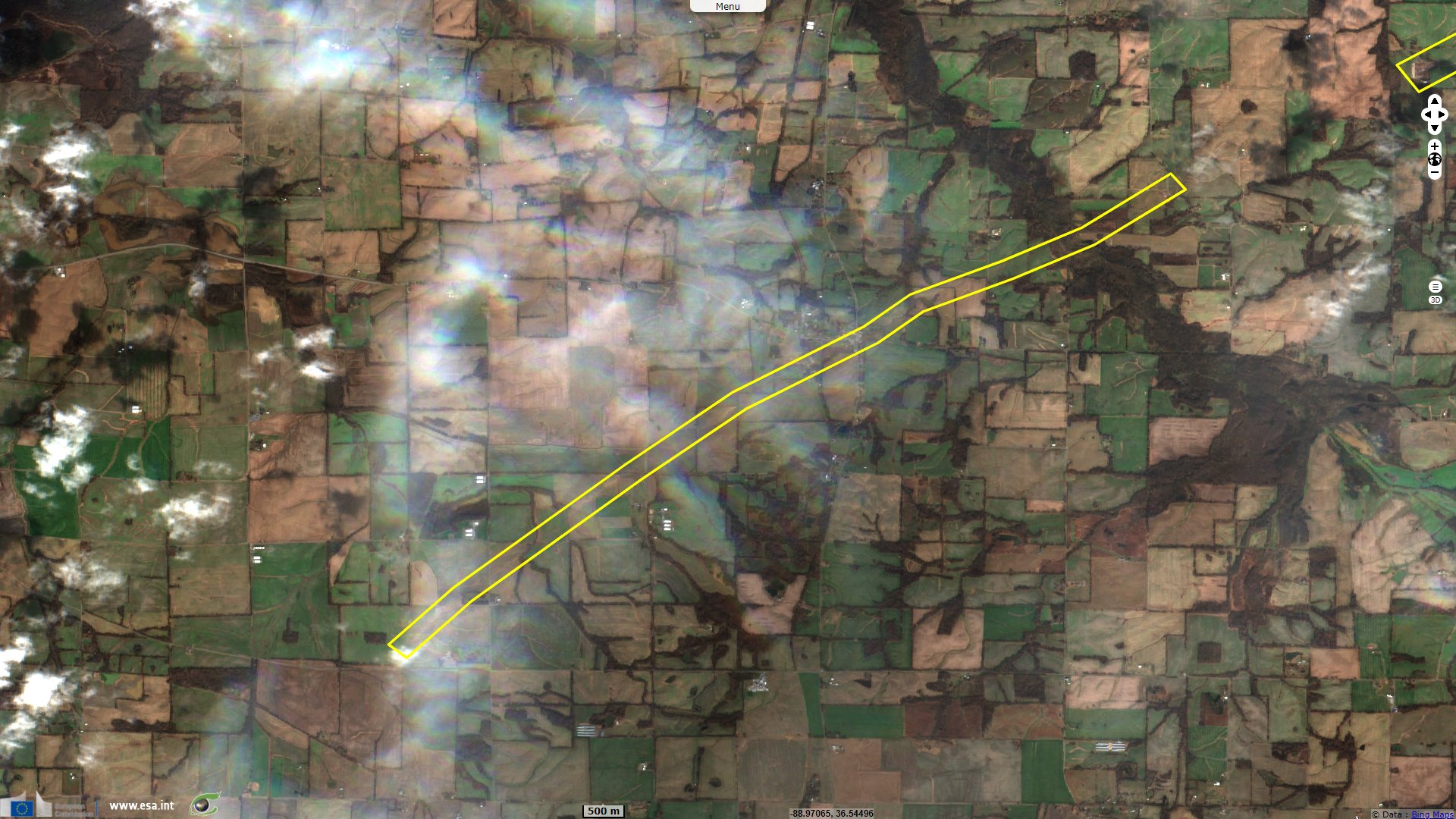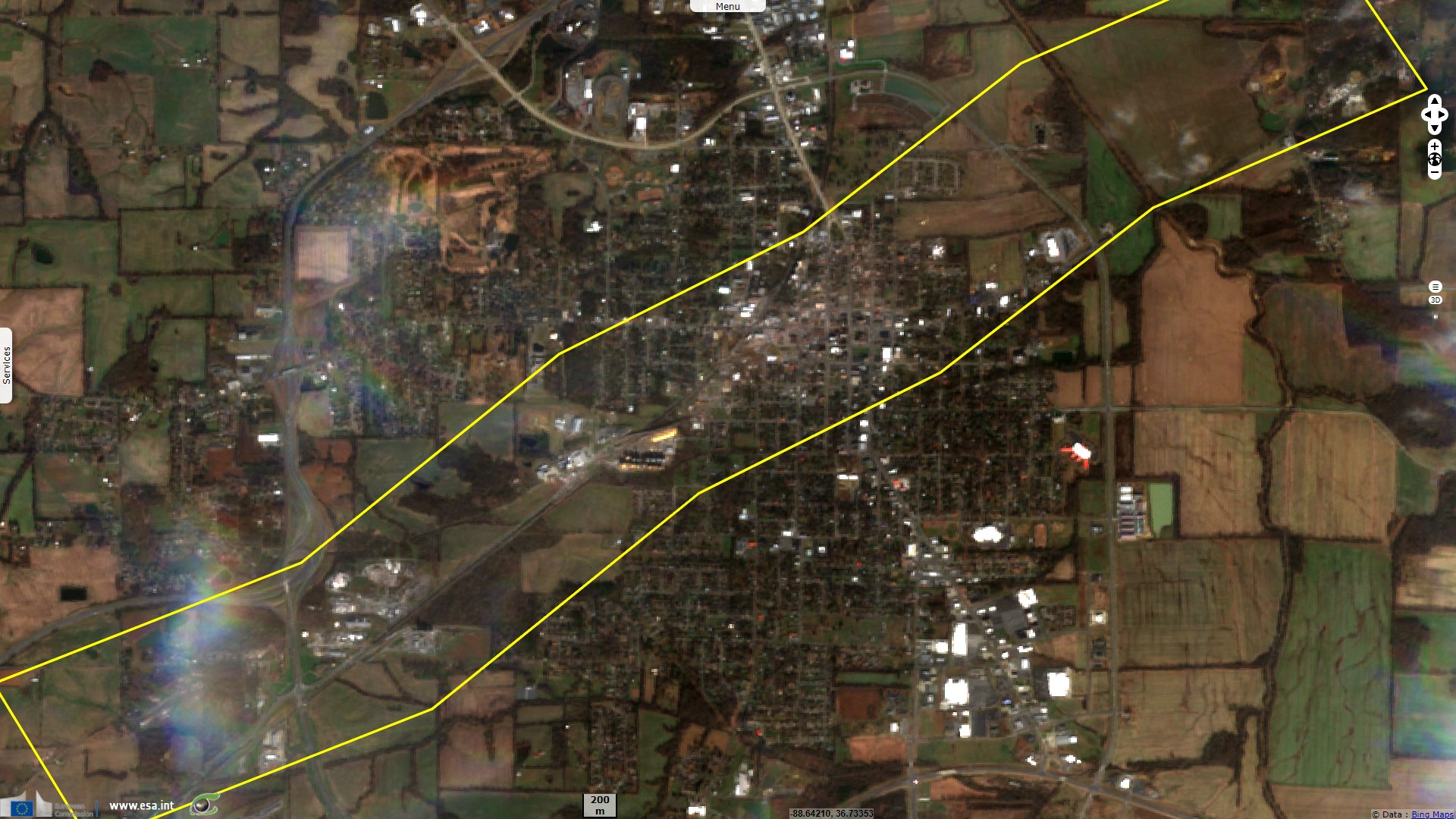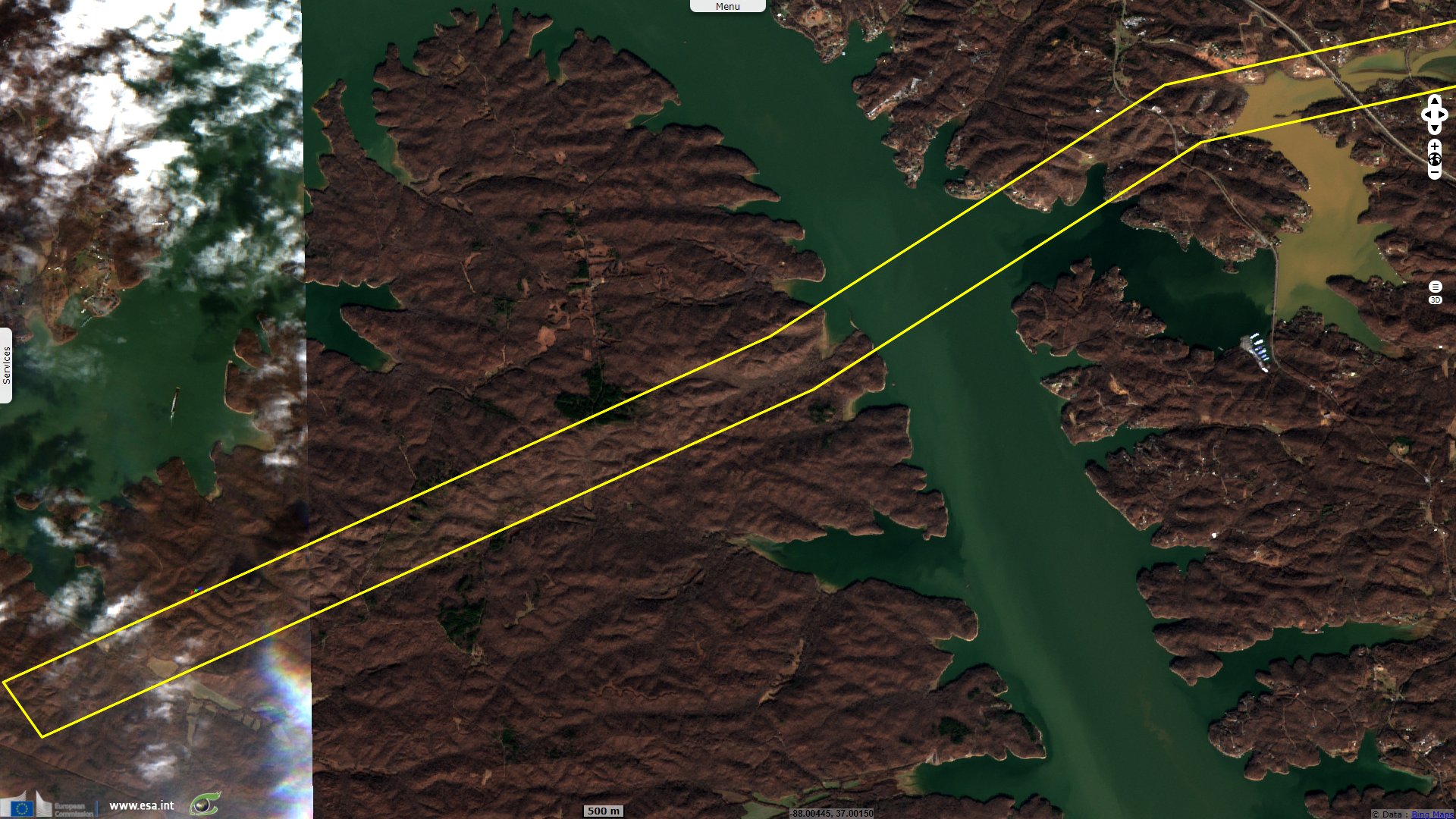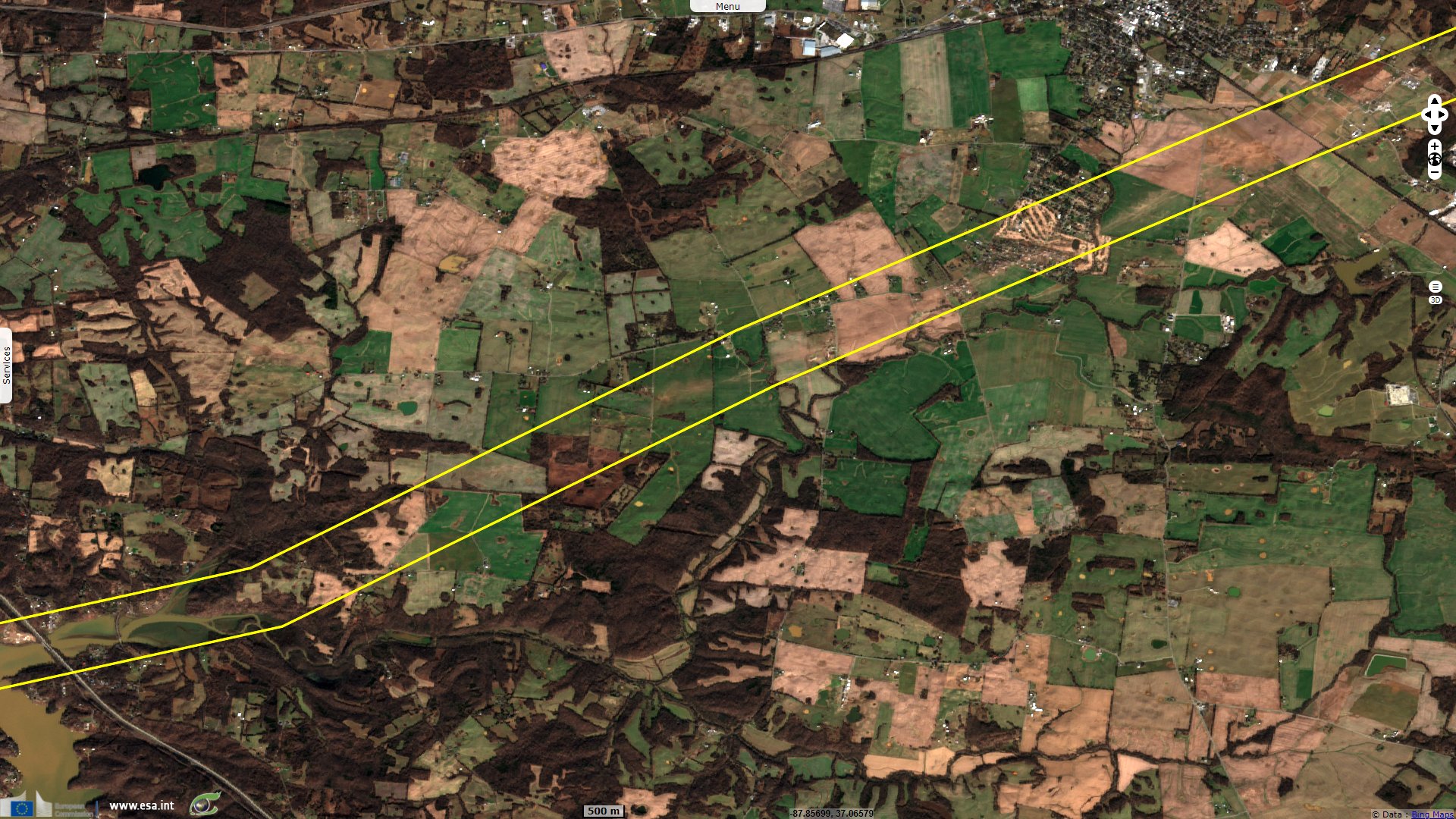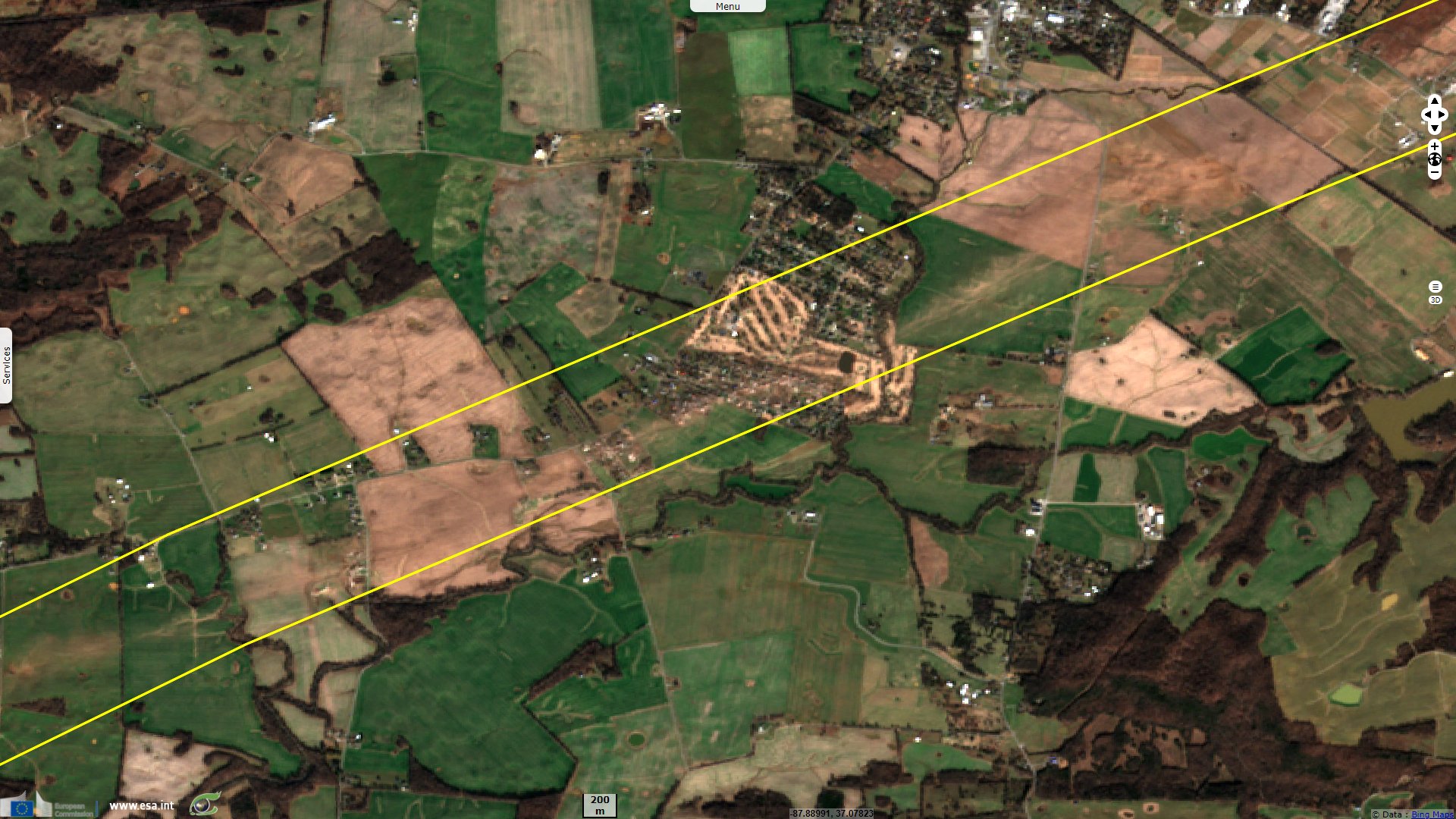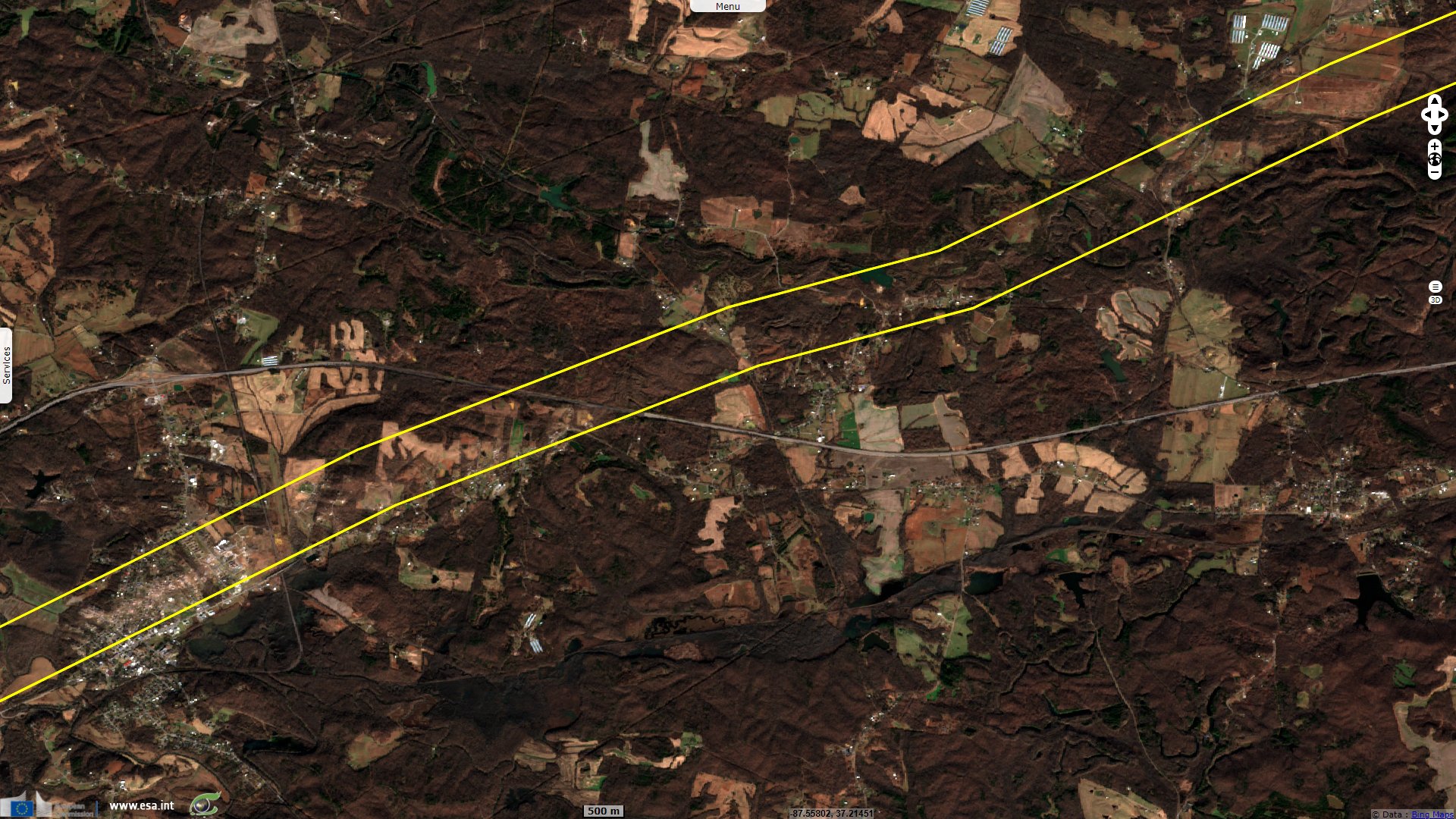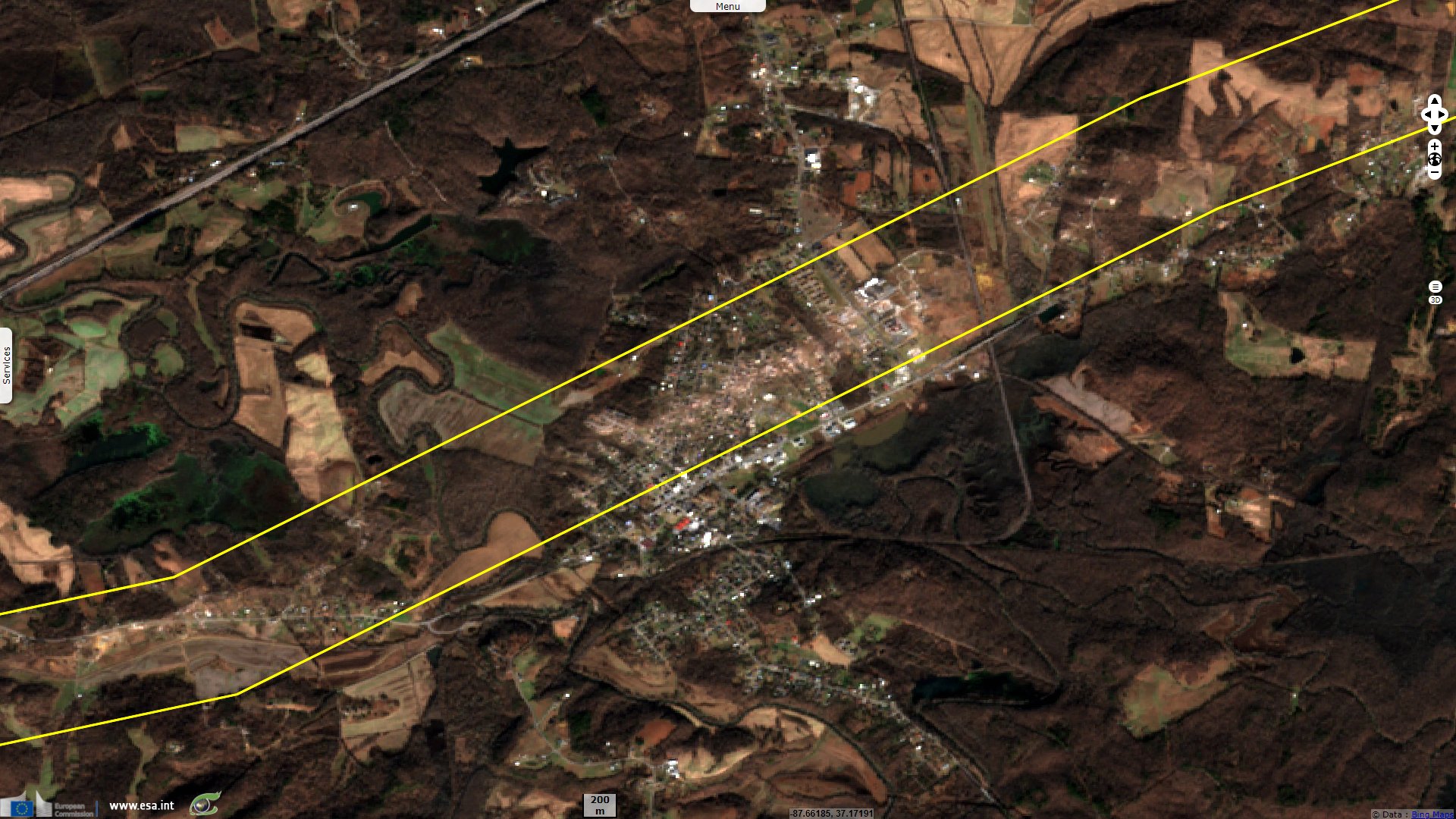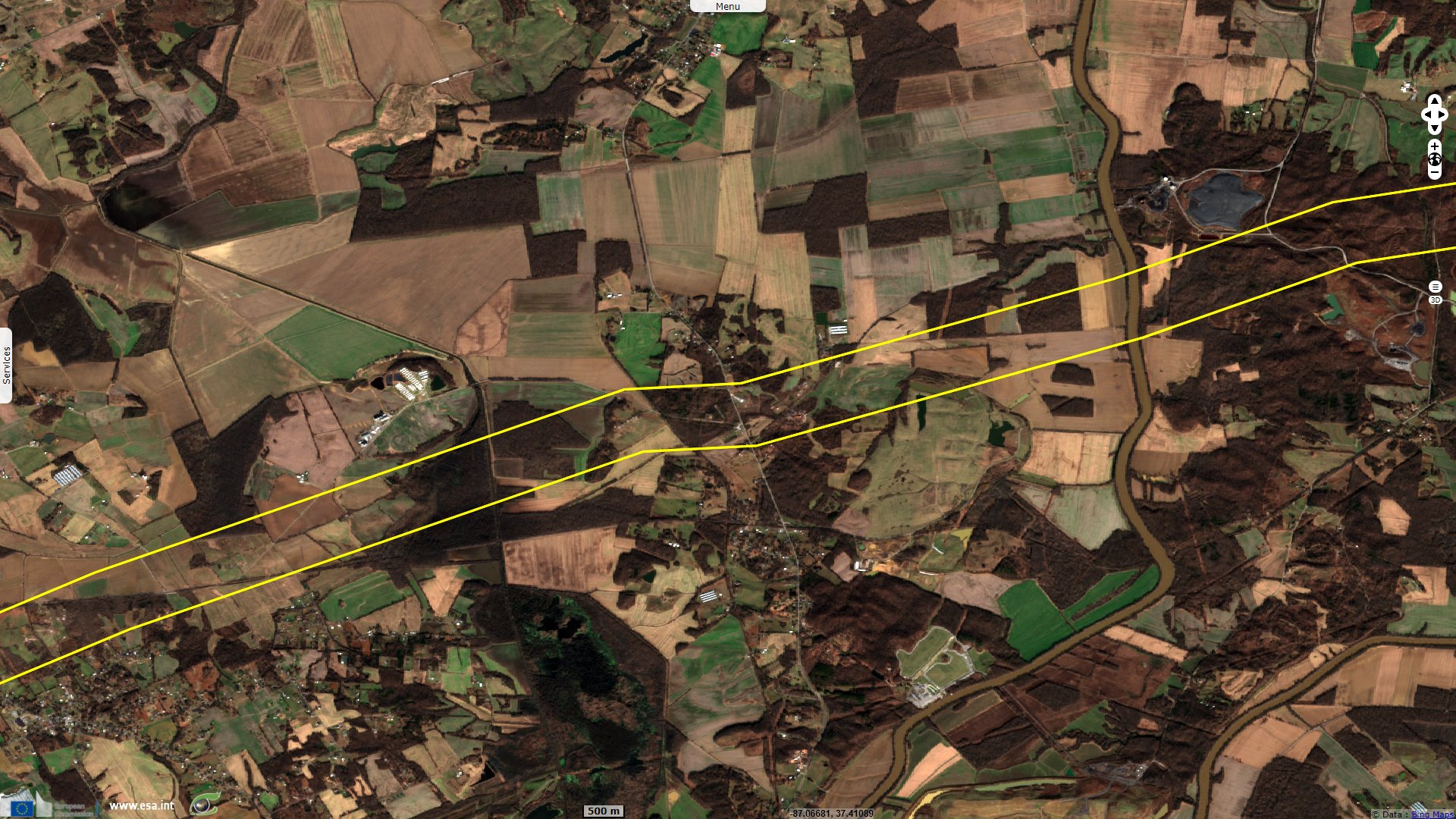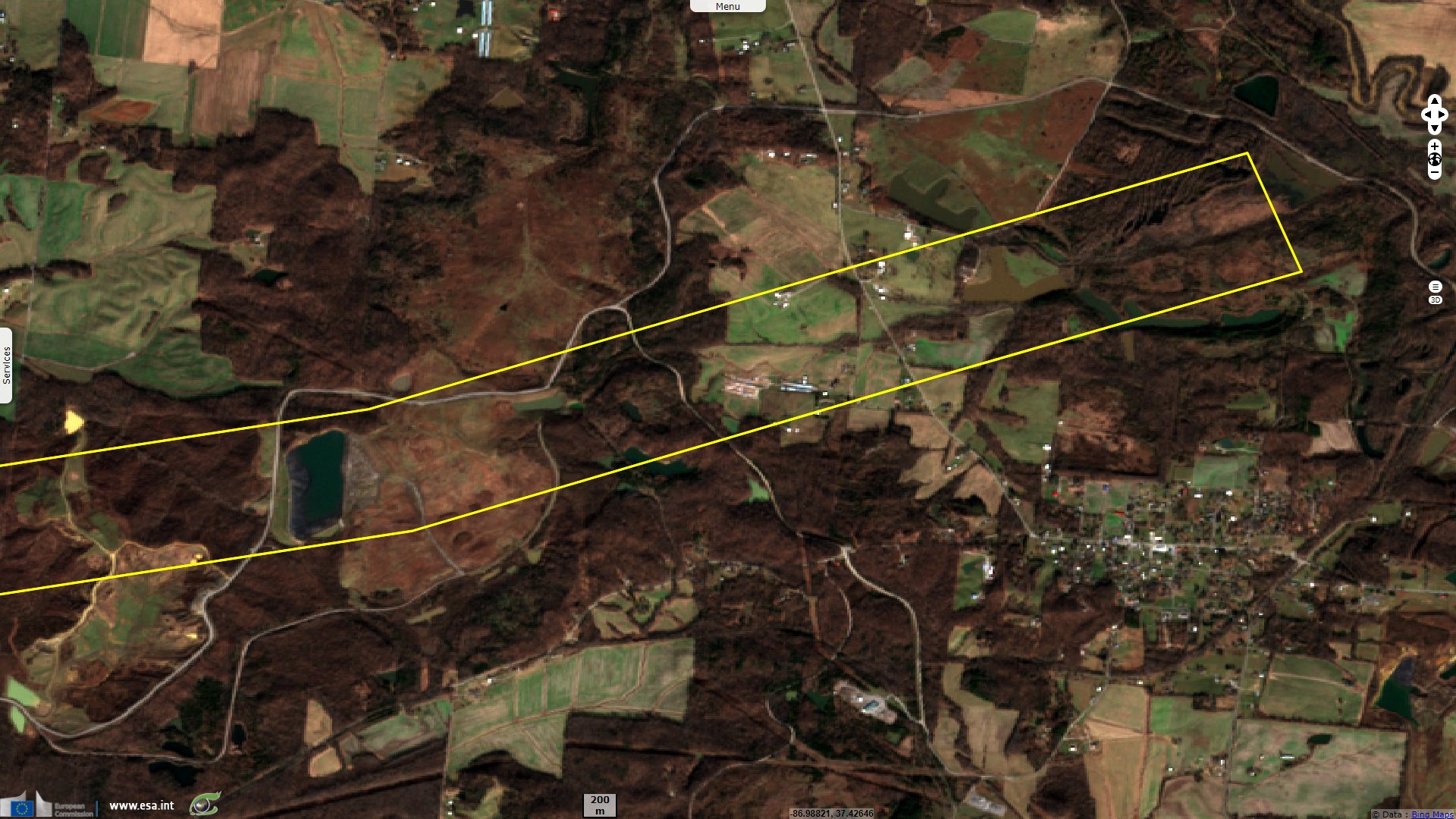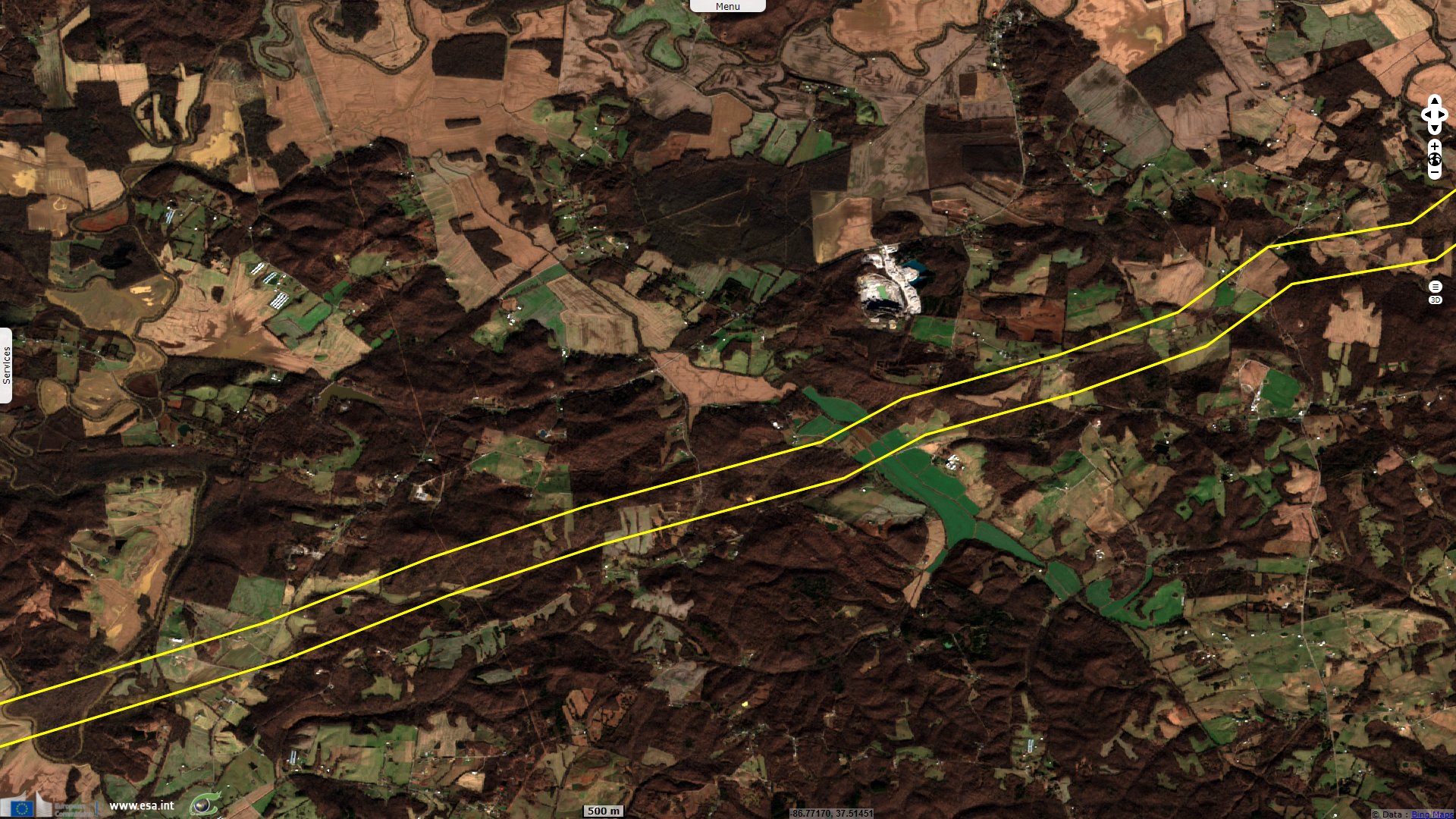Kentucky undergoes a series of deadly tornadoes, USA
Sentinel-2 MSI acquired on 06 December 2021 at 16:47:01 UTC
Sentinel-2 MSI acquired on 08 December 2021 at 16:36:49 UTC
Sentinel-2 MSI acquired on 11 December 2021 at 16:46:59 UTC
Sentinel-2 MSI acquired on 13 December 2021 at 16:37:11 UTC
Sentinel-2 MSI acquired on 08 December 2021 at 16:36:49 UTC
Sentinel-2 MSI acquired on 11 December 2021 at 16:46:59 UTC
Sentinel-2 MSI acquired on 13 December 2021 at 16:37:11 UTC
Keyword(s): Emergency, natural disaster, weather, heatwave, tornado, United States, USA
A deadly late-season tornado outbreak produced catastrophic damage in the Midwest of United States and was responsible for the death of 88 people with even more missing. Jason Hanna described the consequences in CNN: "Kentucky authorities said the sheer level of destruction was hindering their ability to tally the damage from Friday night’s storms. At least 88 people — including 74 in Kentucky and an additional 109 missing — were killed by the tornado outbreak that also destroyed a nursing home in Arkansas, heavily damaged an Amazon distribution center in Illinois and spread its deadly effects into Tennessee and Missouri."
"In Kentucky, as searches continued for those still missing, efforts also turned to repairing the power grid, sheltering those whose homes were destroyed and delivering drinking water and other supplies. Across the state, about 26 000 homes and businesses were without electricity, according to poweroutage.us, including nearly all of those in Mayfield. More than 10 000 homes and businesses have no water, and another 17 000 are under boil-water advisories, Kentucky Emergency Management Director Michael Dossett told reporters."
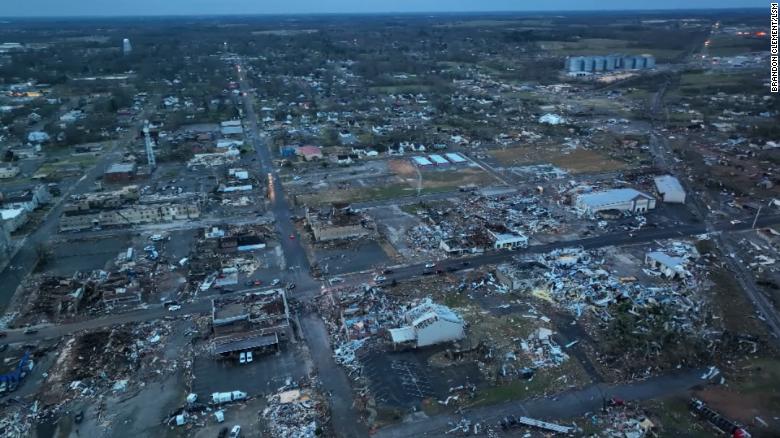
Destruction is seen in Mayfield, Kentucky, on Saturday 11 - Source: CNN.
"On the outskirts of Dawson Springs, another town devastated by the storms, homes were reduced to rubble and trees toppled, littering the landscape for a span of at least a mile. Jack Whitfield Jr., the Hopkins County judge-executive estimated that more than 60% of the town, including hundreds of homes, was 'beyond repair.'"
Jason Samenow, Weather editor at the Washington Post, explains the phenomenon: "During winter, some may assume that the threat of tornadoes fades away as blasts of frigid air plunge into the Lower 48 states and snows blanket the northern landscape. But that chill doesn’t stop tornadoes in the central and southern United States; in fact, it can be a catalyst for spinning storms as it clashes with warm, humid air from the Gulf of Mexico."
"History is replete with examples of devastating December tornadoes. But the tornado rampage from Arkansas to Illinois on Friday night and early Saturday morning rose to another level, unlike anything seen in modern records. In particular, the violence and longevity of the tornadic storm that crossed four states, from northeast Arkansas to western Kentucky, was unusual for December or any time of year, if not unprecedented."
"But none of those events were as deadly or destructive as what transpired Friday and Saturday. More than 100 people are feared to have been killed, making it the deadliest December tornado outbreak on record. Beyond the human toll, the outbreak was exceptional for several meteorological reasons."
"First, there is little precedent for the path length of the quad-state tornadic storm, which carved a [400 km] course through northeast Arkansas, southeast Missouri, northwest Tennessee and western Kentucky. The storm exhibited evidence of rotation even longer, for about 11 hours and 900 km, according to Jack Sillin, a meteorology student at Cornell University. While it is still not clear whether the storm spawned just a single tornado or several twisters, a rotating storm of that duration is very unusual any time of year."
"Radar data also revealed that the storm lofted debris for more than three hours, which is practically unheard of. Sometimes, radar detected debris above [9000 m], an incredibly rare occurrence. There have been numerous reports of items hurled by the storm found more than [160 km] away."
"Only a highly anomalous storm environment could support such an extreme situation. Often, in December, the amount of fuel available to storms is limited, which is why violent tornado outbreaks aren’t more common. But on Friday, temperatures over the zone where the storm erupted were record-setting. The high temperatures, [11] to [17] degrees above normal, fast-forwarded the atmosphere to conditions more typical of April."
This "tornado environment featured record-setting warmth. Memphis hit a record high of [26°C] ([14°C] above normal), joining dozens of others."
